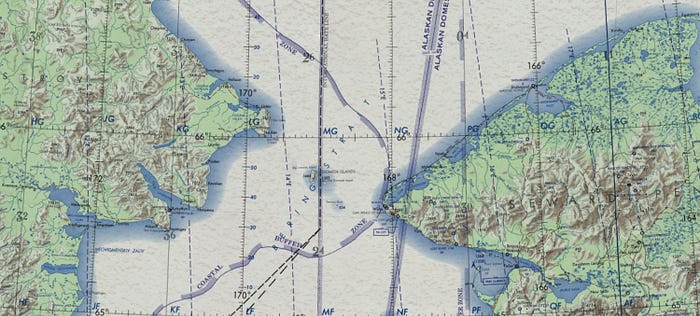The Bering Land Bridge

Current genetic knowledge suggests that human beings (Homo sapiens) evolved roughly 200,000 years ago in Africa. They quickly spread out and populated Europe, Asia and Oceania. Yet, the population of the Americas started only 20,000 years ago. Why did human beings take 180,000 years to populate North America? This blog will explain the same.
It’s settled…
The first modern human beings are said to have evolved about 200,000 years ago in Africa. Crossbreeding with the Neanderthals ensued a rapid population rise and we quickly spread across Eurasia. The map below will put things into perspective.

By the time humans reached Siberia, there was nowhere else to go. From the easternmost tip of what is now Russia, people could surely see distant landmass but had no means to traverse this large void in the frigid Siberian climate, until nature showed them a way.
Isn’t it getting cold?
Nature is full of surprises. One such surprise came in the form of an Ice Age, and although it started more than two million years ago, it reached its maximum just 26,000 years ago.
During this time, temperatures dropped dramatically, especially near the polar regions. This caused ice sheets to form in the northern polar region, which includes Siberia. These ice sheets acted as a land bridge once they completely froze and stabilized. For the first time, humans were able to cross the 80 kilometers wide area between Siberia and North America, and hence the new world was populated.

The ice age remained at its maximum until 15,000 years ago, when the temperature started rising again. Within about 7,000 years the ice sheet that made up the Bering Land Bridge melted, separating Americas from Eurasia again. However, enough humans had migrated by now, and tribal civilizations started flourishing in North and South America.
The Modern Day
Siberia and North America remain separated like they always were before the Ice Age. However, humans have intellectually progressed at an incredible pace in the past years. We are now currently capable of building a bridge across the Bering Strait and connect Asia with the Americas by land once and for all!
Right between the Bering Strait lie the Diomede Islands. These islands can act as an intermediate point in the traversal between Siberia and North America. A proposal has been put forth which involves building three bridges — 35, 6 and 40 kilometers long — which will complete an uninterrupted highway line from South Africa to Panama.

Although building such long bridges isn’t really a challenge, as the water depth in the area is about 50 meters, weather plays the most crucial role in the construction of this bridge. Temperatures in the region easily drop to -20 degrees Celsius in the winters. Safety of the construction workers and future commuters is a huge problem to overcome. And even if a bridge can be constructed, we still do not have enough economic demand to build such an engineering marvel and invest billions of dollars in its construction.
Maybe we just have to wait a little longer.
Until next time!
